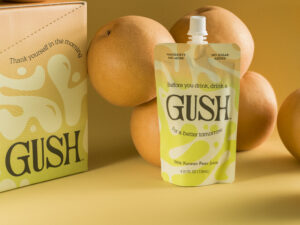For most people, the smell of chlorine in tap water is just another sign that things are “clean.” It’s added to municipal water supplies across the globe to disinfect and kill harmful pathogens like bacteria and viruses. The addition of chlorine in water is hailed as a public health victory that curbed outbreaks of typhoid and cholera in the early 20th century.
But what if the very chemical keeping our water “safe” is slowly contributing to a host of other health issues?
From gut health and digestion to skin irritation and premature aging, chlorine exposure from daily routines like showering, drinking, and cooking may be doing more harm than you think.
What Is Chlorine, Really?
Chlorine is a chemical element, a halogen, that exists as a greenish-yellow gas at room temperature. It’s a very reactive element and is commonly used as a disinfectant and a bleaching agent. It’s also used in the production of various industrial products like chlorinated solvents, polymers, and synthetic rubbers. Due to its composition, it is widely used to treat drinking water to kill off waterborne pathogens that can cause disease. But chlorine doesn’t just vanish once it’s done but it remains in the water you drink, bathe in, and cook with.
The EPA allows up to 4 milligrams per liter (mg/L) of chlorine in drinking water, claiming it’s safe for long-term consumption. But emerging science tells a more nuanced story.

How Chlorine Affects You from the Inside
The ingestion of chlorine highly disrupts your gut microbiome. Your gut is home to trillions of microbes, collectively known as the gut microbiota. These are vital for everything from digestion and immunity to mood regulation. Chlorine kills microbes, and it doesn’t necessarily stop with the ones in your tap water.
A recent study noted that consistent consumption of chlorinated water can disrupt the balance of beneficial gut bacteria, potentially contributing to leaky gut syndrome, weakened immunity, and inflammatory conditions like IBS and Crohn’s disease.
the balance of beneficial gut bacteria, potentially contributing to leaky gut syndrome, weakened immunity, and inflammatory conditions like IBS and Crohn’s disease.
Additionally, chlorine absorption in the body results in formation of toxic byproducts (THMs). Chlorine doesn’t just sit quietly in water, it reacts with organic matter like manure to form byproducts like trihalomethanes (THMs) and haloacetic acids (HAAs), which are linked to serious health issues.
According to the Environmental Working Group (EWG), long-term exposure to THMs has been associated with increased risk of bladder, colon, and rectal cancers, reproductive issues including miscarriage and low birth weight, and liver and kidney toxicity.
Even boiling water or using it in tea, coffee, or to rinse fruits and vegetables doesn’t fully eliminate these byproducts with some studies showing they can become even more concentrated when heated.
How Chlorine Affects You from the Outside
With your skin being the largest organ, its ability to instantly absorb the chlorine you shower and bathe in also comes with negative health effects. Chlorinated water strips away the natural oils that protect your skin. Over time, this can lead to dryness, skin irritation and sensitivity, itching and eczema, and premature wrinkles.
A 2024 study in Journal of Biology and Pharmacy found that people with frequent exposure to chlorinated water (swimmers or those with long daily showers) reported higher rates of dermatitis and oxidative skin damage. The effects aren’t just superficial. Chlorine can disrupt your skin’s microbiome, just like it does in your gut, leading to increased inflammation and sensitivity.
exposure to chlorinated water (swimmers or those with long daily showers) reported higher rates of dermatitis and oxidative skin damage. The effects aren’t just superficial. Chlorine can disrupt your skin’s microbiome, just like it does in your gut, leading to increased inflammation and sensitivity.
Additionally, chlorine bonds to hair proteins, especially keratin, leading to ongoing hair damage such as dryness, split ends, and discoloration (especially in color-treated hair). Over time, this can lead to breakage and a “fried” appearance, even if you’re not a frequent swimmer.
The same goes for hot tubs. Most people don’t think about breathing chlorine, but during hot showers or sitting in hot tubs, chlorine transforms into chloroform gas and other volatile compounds. A 2024 study published in Cureus found that breathing in chlorine can cause severe respiratory issues, including airway damage, alveolar injury, pulmonary edema, and chronic conditions such as bronchiolitis obliterans.
Furthermore, according to a 1999 study from Environmental Health Perspectives, showering in chlorinated water can expose people to higher levels of chloroform than drinking the same water, increasing the risk of respiratory irritation, asthma, and even certain cancers over time.
Chlorine Is Hiding In Your Food
 It’s not just the chlorine in your tap water you need to be wary of – it’s also hiding in your food. One of the most controversial practices in industrial poultry production is the use of chlorine washes to disinfect chicken meat, especially in the U.S.
It’s not just the chlorine in your tap water you need to be wary of – it’s also hiding in your food. One of the most controversial practices in industrial poultry production is the use of chlorine washes to disinfect chicken meat, especially in the U.S.
After chickens are slaughtered in large-scale facilities, they’re often dunked or sprayed in chlorinated water baths to kill pathogens like salmonella and E. coli. While this may sound like a harmless sanitization step, the practice raises serious health and ethical concerns. The latter being so much so that chlorine-washed chicken is banned in the European Union, where food safety laws favor preventive hygiene (raising healthier animals in cleaner conditions) over chemical disinfection.
This process doesn’t improve animal welfare or farm conditions but just attempts to sanitize the final product. The chicken may come from cramped, unsanitary environments where disease is rampant, but a chlorine dip masks the deeper problem.
Repeated exposure to chlorinated meat may introduce low-level chlorine residue into the human body over time, especially if consumed regularly. Of course, this ultimately leads to potential gut microbiome disruption (similar to drinking chlorinated water), increased antimicrobial resistance from over-sanitized food, and ingestion of trace levels of chlorine byproducts.
How to Protect Yourself from Chlorine Exposure
- Filter Your Water: Use carbon-based filters (like Berkey or Aquasana) to remove chlorine and its byproducts. Install shower filters to protect your skin and lungs.

- Let Water Sit or Boil (Cautiously): Letting water sit uncovered for a few hours can allow chlorine to evaporate. Be cautious boiling chlorinated water, it can concentrate toxic byproducts like THMs.
- Rinse Produce with Filtered Water: Use filtered or distilled water to rinse fruits and vegetables, especially porous ones like berries.
- Hydrate with Intention: Choose spring water or water from reverse osmosis systems when possible, especially if you’re healing your gut or skin.
- Look for organic, pasture-raised, air-chilled chicken that hasn’t been water-chilled in a chlorine bath prior to packaging.
Conclusion: Rethinking “Clean” Water
For decades, chlorine has been praised as a public health hero, credited with eliminating deadly pathogens from our drinking water. But as we’ve peeled back the layers, it’s clear that the story is more complex. From its disruptive effects on the gut and skin microbiome to its links with chronic disease, chlorine’s legacy as a simple solution to waterborne illness comes with some heavy baggage.
The good news? You’re not powerless. With the right filters, conscious shopping choices, and a bit of intention, you can significantly reduce your exposure. Clean water shouldn’t come at the cost of your long-term health. By staying informed and proactive, you can reclaim the purity of something as essential as water — and protect the health of your body from the inside out.









